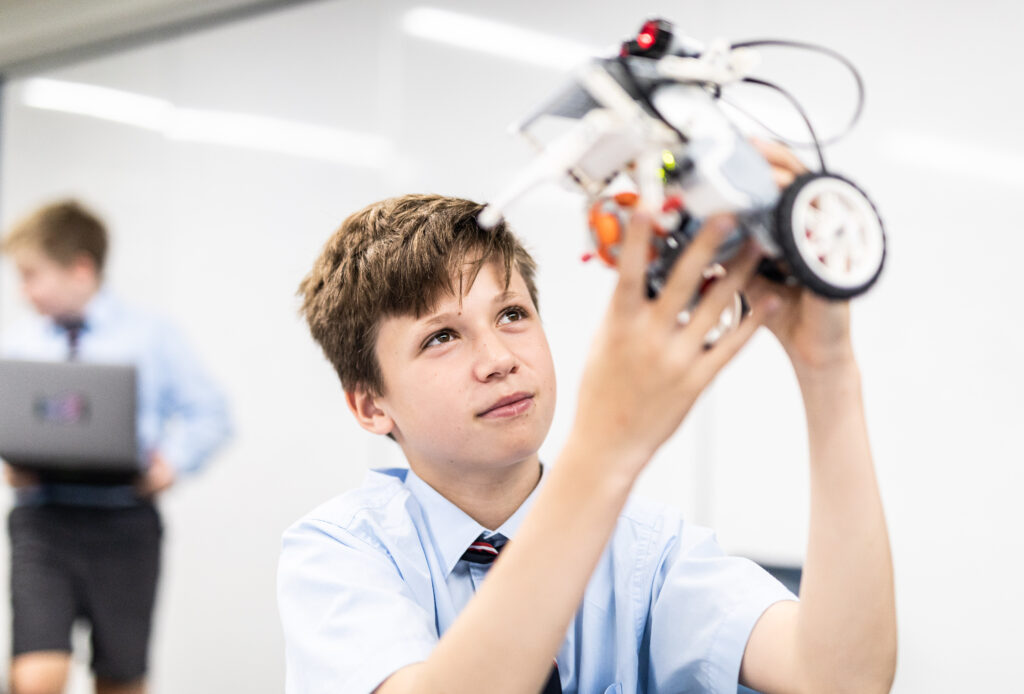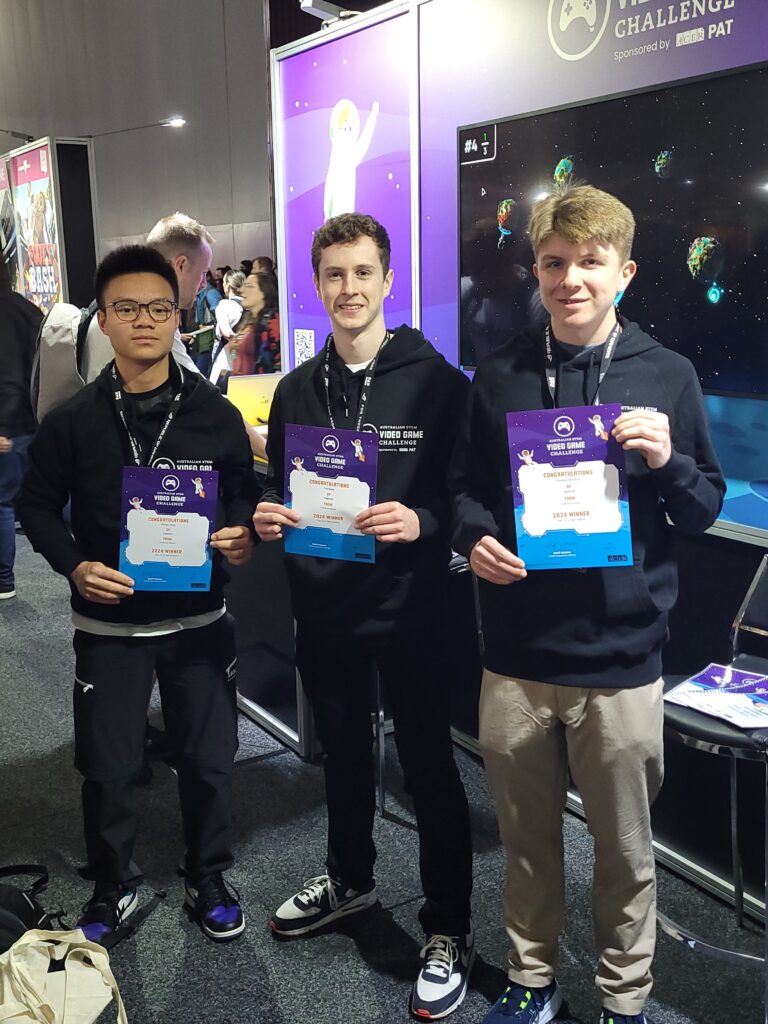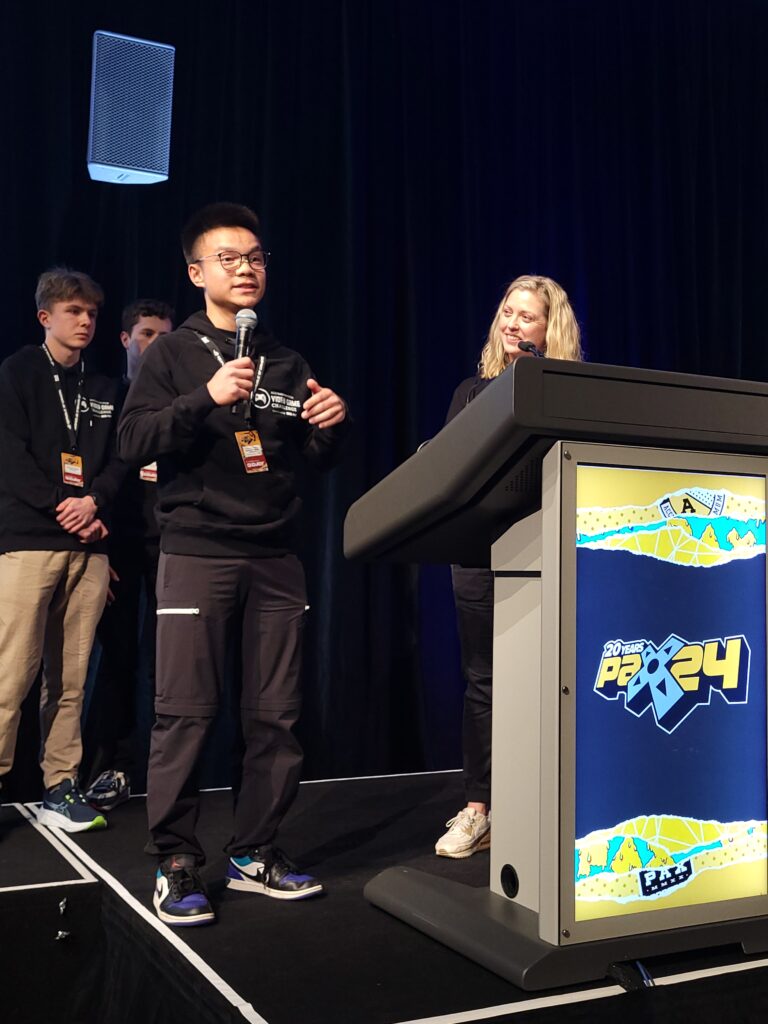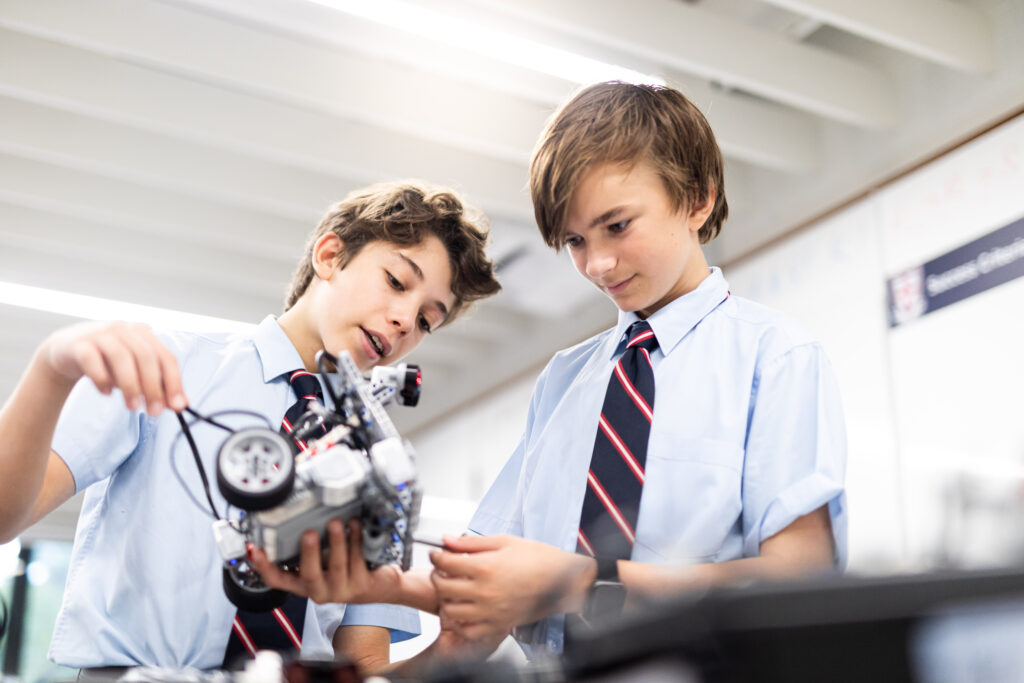
Cranbrook School is committed to fostering innovation through its STEAM (Science, Technology, Engineering, Arts, and Mathematics) programmes. These programmes inspire students to explore and excel in these disciplines and empower them to apply their knowledge in real-world contexts. From winning robotics competitions to developing cutting-edge apps, space programmes and conducting groundbreaking scientific research, Cranbrook students are proving they are tomorrow’s innovators
Robotics: A Gateway to Engineering and Teamwork
ONE OF THE STANDOUT achievements in Cranbrook’s STEAM programme is the success of its Robotics teams. These students have consistently excelled in regional and national Robotics competitions, showcasing their skills in engineering, programming, and teamwork.
The Robotics programme at Cranbrook is more than just a club; it’s a hands-on learning experience where students design, build, and programme robots to complete complex tasks. The challenges faced in these competitions require not only technical expertise but also creativity, strategic thinking, and effective collaboration. For instance, a recent victory at a local Robotics competition highlighted the ingenuity and perseverance of Cranbrook students. Their robot, designed to navigate a challenging obstacle course and complete specific tasks, stood out for its innovative design and flawless execution. This achievement reflects the School’s emphasis on practical, project-based learning, where students are encouraged to push the boundaries of what they can create. Head of Technological and Applied Studies (TAS), Joel Budd explains “Our department is very focused on development and growth. we are always looking at how we can provide students ways to develop their thinking in areas of interest.
“For example, our HSC Software Engineering and IB Computer Science teacher Ross Fryer, along with Science teacher Paul Vessalas, are leading a STEM hub co-curricular programme focusing on VEX Robotics. VEX Robotics is well known for its competitions which are managed by the Robotics Education and Competition Foundation (RECF). These competitions are held worldwide and encourage students to apply their STEM knowledge in real world scenarios. “The programmes are designed to prepare students for careers in STEM fields by teaching them valuable skills such as coding, engineering and problem solving. While Cranbrook has started in this space, we are excited and focussed on competing and developing further in Robotics,” Joel says.
Cranbrook’s STEM HUB co-curricular activity is limited to 20 students, from a range of different year levels. Students learn algorithms to control robots using block and text-based programming languages and then design and build robots to complete tasks. Robots were autonomous and remote controlled and completed a range of activities. “Alongside the VEX Robots programme, we have introduced a new unit in 9STEM. Students have been introduced to autonomous vehicles and are very intrigued with development from larger organisations such as Tesla, Waymo and Cruise. The students are grounding themselves in the disciplines and developing an understanding of the issues that autonomous
vehicles have on the wider community. It will be interesting to watch developments and student engagement in this space,” Joel says

App Development and video games: Turning Ideas into Reality
CRANBROOK’S COMMITMENT to innovation is also evident in its app development programme, where students are taught to turn their ideas into functional applications that address real-world problems as well as provide entertainment. The programme combines the technical aspects of coding with design thinking and user experience, ensuring that students not only create apps that work but are also intuitive and user-friendly. Ross Fyer, IB Computer Science teacher, has worked diligently with the students to ensure their game apps are of the highest standard.
In an exciting achievement for Cranbrook, a team of four Year 10 students from the co-curricular IST (Information and Software Technology) Club claimed the top prize in the prestigious ACER Australian STEM Video Game Challenge in the Years 10 to 12 open category. Competing against students nationwide, the team’s innovative space-based golf game, Swingularity, impressed the judges with its creative gameplay, technical excellence, stunning visuals, and immersive soundtrack.
Swingularity offers players a unique challenge: guiding their golf ball through the gravitational forces of planets and stars in deep space. This creative fusion of science and gaming made the project stand out, blending complex physics with the fun and strategy of golf in a futuristic setting.
Its development team included Hudson Woolford and Ted Boss leading the coding efforts, designing gameplay mechanics, and refining the player experience. Their work was complemented by Mickey Chen, who created the game’s striking space-themed graphics, and Kevin Chu, whose atmospheric soundtrack added depth and excitement to the game.
Their national win took them to the PAX Aus 2024 Game Conference in Melbourne in October where they received positive feedback from a range of game developers and they now plan to further develop the game and place it on streaming services for download.
Integrating Art and Science: The Power of STEAM
CRANBROOK’S INNOVATIVE APPROACH to education is perhaps most evident in its integration of art and science within the STEAM framework.
Recognising that creativity is essential to scientific and technological innovation, the School encourages students to explore the intersections between these disciplines. Classroom projects that blend art and science are a hallmark of Cranbrook’s curriculum, allowing students to develop a well-rounded understanding of both the technical and creative aspects of problem-solving.
One such 2024 Year 7 project involved students creating visual representations of complex scientific concepts via an Australian ecosystem stop motion animation.
Beginning with the statement of inquiry, ‘The Earth is a collection of systems and cycles that are affected by human actions,’ the students worked in groups of three or four students to research and produce a stop motion animation about an Australian rock formation and its surrounding ecosystem.


The Northern Territory’s Uluru and Karlu Karlu (Devil’s Marbles) were two of the rock formations students could choose for their project. They firstly researched the creation and evolution of the rock formation as well as its impact on the local flora and fauna.
Charged with this knowledge and research documentation, the students then put their creative minds to work, to produce a 60 second animation to visually demonstrate their learnings. This included use of colour and space, voiceovers, music, sound effects and symbols.
Using materials including plasticine, coloured paper, scissors, glue, rulers, cardboard, string, paper clips, they built and photographed their projects to show the effects of climate, flora, fauna and time, on the rock formation and landscape.
This art component complemented the scientifically written project requirement, complete with bibliographies, and their visual and creativity skills.
IB MYP Coordinator, Erin Munn said the Year 7 students developed their communication skills to “effectively represent how a change in population of one species in an ecosystem will impact the population of other species in the ecosystem. They creatively showed how food webs and energy transfers affect the landscape over hundreds of years.
“As well as scientific and creative expression, the group project built the students’ communication and research skills, as well as self-management and social skills required for group work. This is a vital part of preparing for students for future group tasks and projects as they progress through their middle and senior high school years,” Erin says.

Future Careers
STEAM PROJECTS PLAY a pivotal role in preparing students for a dynamic and rapidly evolving career landscape, Joel Budd explains: “By engaging in STEAM initiatives, students develop critical thinking, creativity, and problem-solving skills that are essential in today’s workforce. These projects challenge them to apply theoretical knowledge in practical scenarios, fostering innovation and adaptability. Such hands-on experiences equip students with the ability to approach complex problems from multiple perspectives, which is increasingly valuable across various industries, from technology and engineering to design and the arts.”
STEAM encourages interdisciplinary collaboration, mirroring the real-world environment where solutions often require input from diverse fields. Working on these projects enhances communication, teamwork, and leadership skills, all of which are crucial for career success. “Whether students pursue careers in engineering, healthcare, education etc, the collaborative and cross-functional nature of STEAM projects gives them the confidence and competence to thrive in diverse professional settings,” he says.
“The importance of STEAM education extends beyond technical skills; it helps students become lifelong learners with an appreciation for how different fields intersect to create innovative solutions. By engaging in STEAM initiatives, students are better prepared to tackle the challenges of an increasingly digital and interconnected world, making them highly competitive in the job market,” he adds.
A Culture of Achievement and Innovation
THE SUCCESS OF CRANBROOK’S STEAM programmes is reflected in the achievements of its students, who consistently excel in competitions, develop impactful projects, and contribute to scientific research. But beyond these accomplishments, Cranbrook is committed to fostering a culture of innovation, where students are encouraged to think critically, collaborate effectively, and approach challenges with creativity and curiosity.
As Cranbrook continues to expand its STEAM offerings, the School remains dedicated to preparing students for the rapidly changing world they will inherit. By equipping them with the skills and mindset needed to innovate, Cranbrook is not just educating students—it’s shaping the leaders, creators, and problem-solvers of tomorrow.

)
)
)